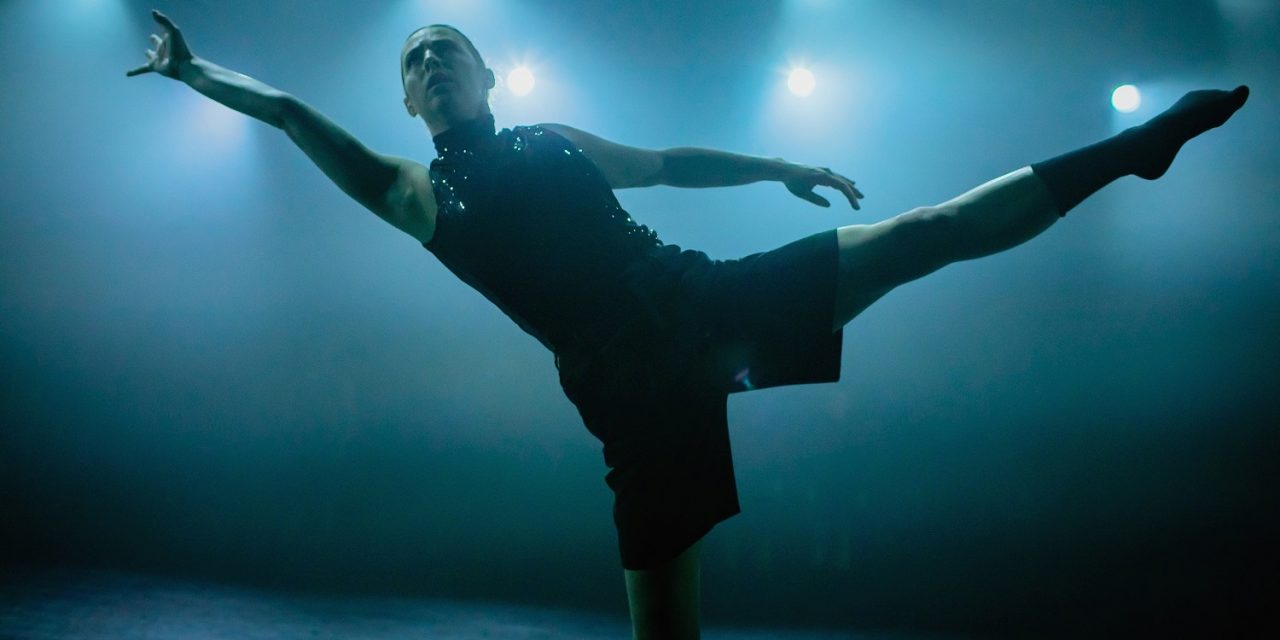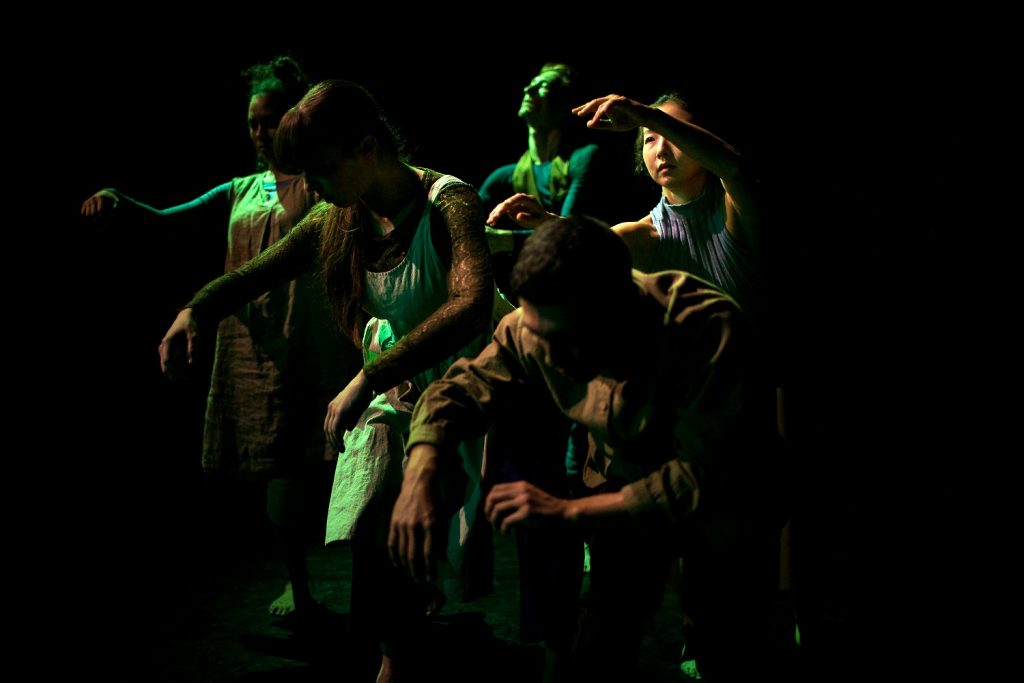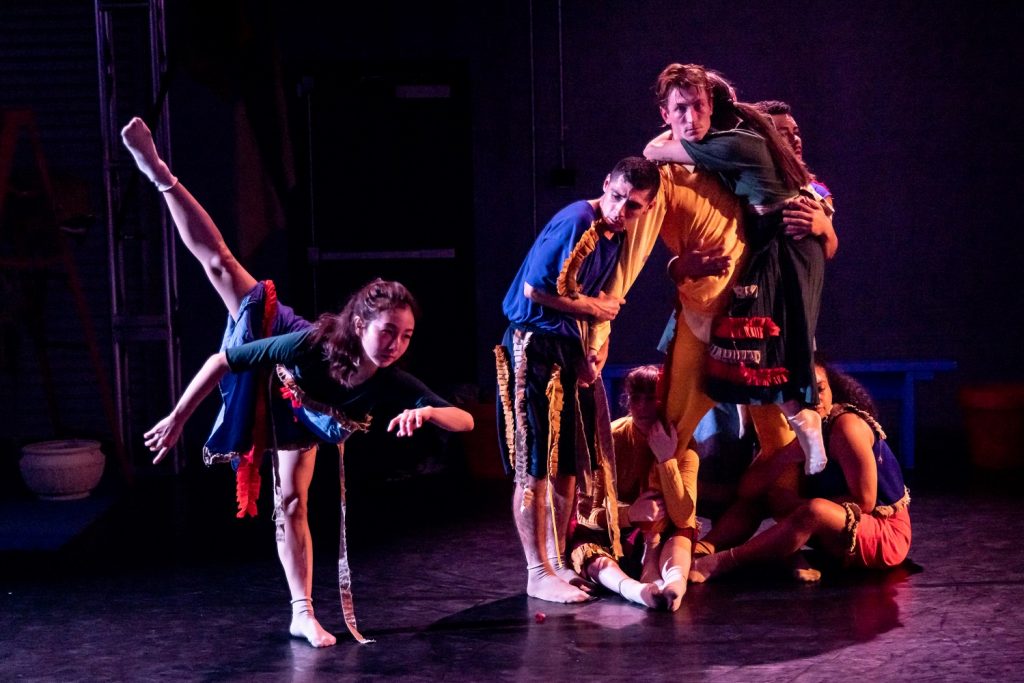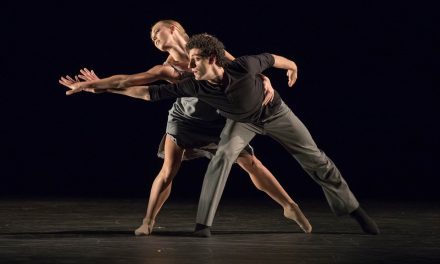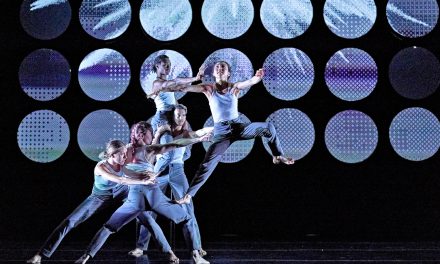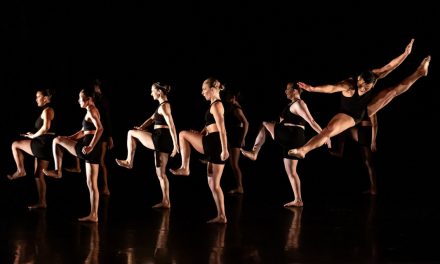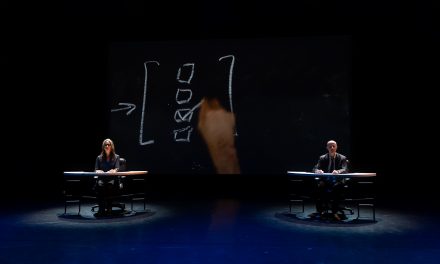At their first live concert following the pandemic, If These Walls Could Talk, L.A. Contemporary Dance Company (LACDC) has come back stronger than ever. With three world premieres on the program, Artistic Director Jamila Glass has guided the company to greater heights of professionalism. The work presented was powerful and the cast is probably one of the strongest since LACDC was co-founded in 2005 by Kate Hutter Mason. It helped, of course, that the company has a brand new home, Stomping Ground L.A., to create dance works on film throughout the time theaters were shuttered, and to keep the dancers in shape.
Insecto Primitivo (Excerpt) was first seen as a film titled INSECTOS: arte y vida choreographed by Spanish choreographer Elías Aguirre to a driving musical score by composer Jorge de Rocha, also from Spain. The opening of this work was built primarily in unison movement and the cast of dancers proved that they were up to the challenge of staying together throughout the entire required time. The hopped on two feet in place and moving around the stage changing formations and patterns, all the while gesturing with their arms. They stood in place rocking back and forth while continuing similar arm gestures.
As the dark atmospheric lighting by Claire Chrzan shifted a duet takes place to the sounds of unknown and unseen insects. The dancers collect against one of the side walls like flies on a screen door and continue to move throughout the space as a community with a commitment known only to them. Without trying to look like insects, Aguirre’s choreographic structure presents their life cycles and domains ever so clearly.
With the sound of insects changing to the gorgeous sounds of a cello, JM Rodriguez danced as beautifully and powerfully as the score. There was an amazing lift where a dancer ran at another and leapt up onto another’s shoulders without using her hands. I was as impressed when it happened a second time with different dancers, and the dance ended with a very beautiful but eerie exit of a male dancer crawling off with a female on his back in a shape that, for me, evoked a newly hatched insect on the back of its parent.
The incredible cast of Insecto Primitivo was Hyosun Choi, Kate Coleman, Nicole Hagen, Colleen Hendricks, JM. Rodriguez with guest artists Derrick Paris and Hunter Wayne. The appropriate costumes that brought unity to the dancers were by Angel Tyson with assistant Ryan Ruiz.
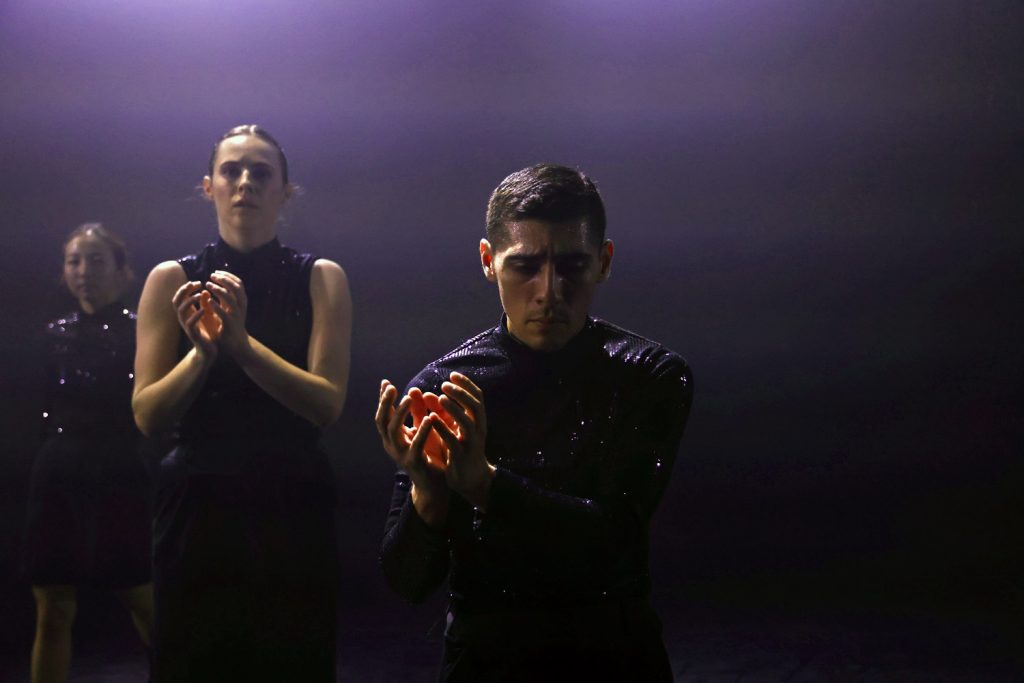
LACDC – (L-R) Hyosun Choi, Nicole Hagen, JM. Rodriguez in “Table For One” choreography by Iker Karrera – Photo by @Taso Papadakis
After beginning with a strong solo by Ryan Ruiz dancing center stage with two other dancers in darker lighting on stage left, Table For One by Spanish choreographer Iker Karrera, was somewhat weakened by the fact that like the work before it, was heavy with unison work to a similar rhythmic and driving score by American composer Alex Aller.
Karrera’s movement in Table For One felt aggressive, but not in an endangering way, and Chrzan inventive lighting allowed the cast to all but disappear without leaving the space. The hovered in the distance, ready at any time to advance. Karrera also made use of flamenco styled arms and backs, especially in a duet that hinted at El Toro about to charge a toreador.
Table For One had one the most powerful endings I have seen in some time. The cast of dancers, Nifflers: Hyosun Choi, Nicole Hagen, JM. Rodriguez, and Ryan Ruiz, and Bowtruckles: Kate Coleman, Colleen Hendricks, with guest artists Edgar Aguirre, and Hunter Wayne simply stood in a line very close to the front row while subtly shifting their focus to see each individual audience member. Just before the lights faded, a small but all-knowing smile came across their faces.
The second half of the concert presented, and then life was beautiful, choreographed by Jamila Glass in collaboration with the performers. It is longish work that felt like a journey through time, eras and generations. It opens with three abstractly structured rooms and a few dancers lying scattered over the floor. As the lights come up they reveal costumes referencing a pre-renaissance era. These become confusing as the dance progresses because the style of movement shifts dramatically while only one outer layer of the costumes are removed. I definitely followed the map of Glass’s work, but never felt like any situation was ever settled.
and then life was beautiful is a narrative, dance theater piece that highlights every performer at one time or another. The entire cast is wonderful but the standouts for me, the ones that I had a hard time not watching, were the tall and angular guest artist Hunter Wayne, the beautiful Nicole Hagen, the petite Sandy Strangis, the handsome JM. Rodriguez, and the ever glorious Hyosun Choi.
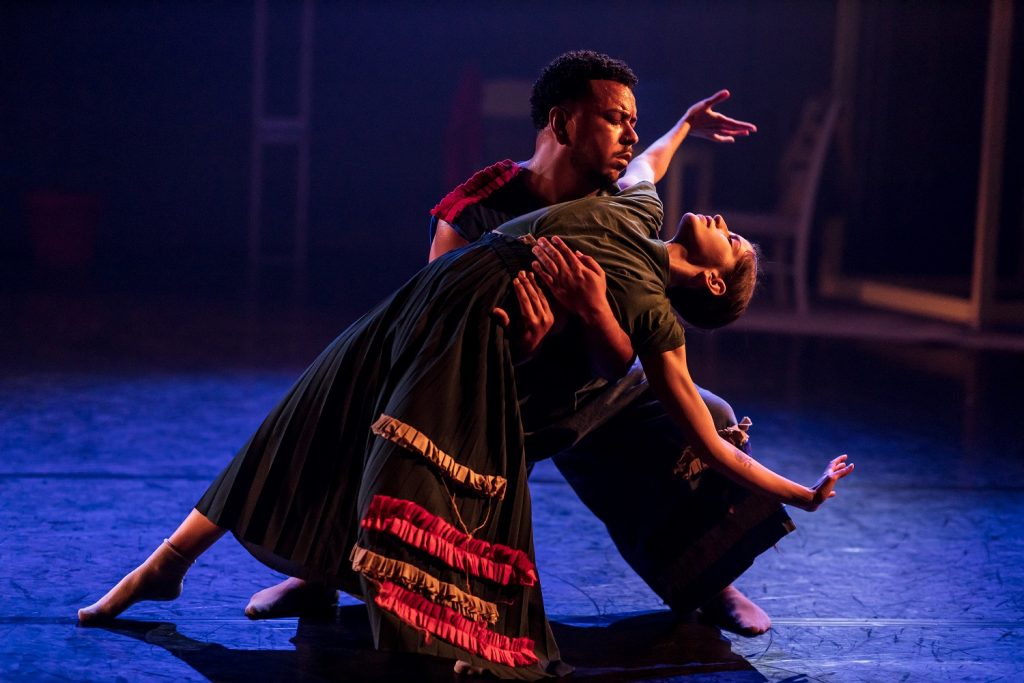
LACDC – Sandy Strangis and Derrick Paris in Jamila Glass’s “and then life was beautiful” – Photo by @Taso Papadakis
One of the highlight of this work was the music score by Los Angeles based composer Eric Mason. His score was inspirational and greatly enhanced Glass’s choreographic shifts and turns. Glass’s and then life was beautiful is very strong work that definitely must be seen multiple times to take in everything that is transpiring, and it is one that would benefit greatly from minor edits. But, like all works, it needs time to mature and for the performers to grow into their characters. For me, the ending is also a tad too obvious.
The cast of incredibly talented dancers included Hyosun Choi, Nicole Hagen, Colleen Hendricks, JM. Rodriguez, and guest artists Derrick Paris, Sandy Strangis, and Hunter Wayne. The art decoration and the elaborate costumes which sometimes hid the movement were by Rick Gradone.
LACDC is rapidly becoming one of LA’s strongest companies. I suggest that if you go see them the next time that they are performing.
To learn more about L.A. Contemporary Dance Company, please visit their website.
Written by Jeff Slayton for LA Dance Chronicle.
Featured image: LACDC – Table For One choreography by Iker Karrera – Photo by Taso Papadakis

